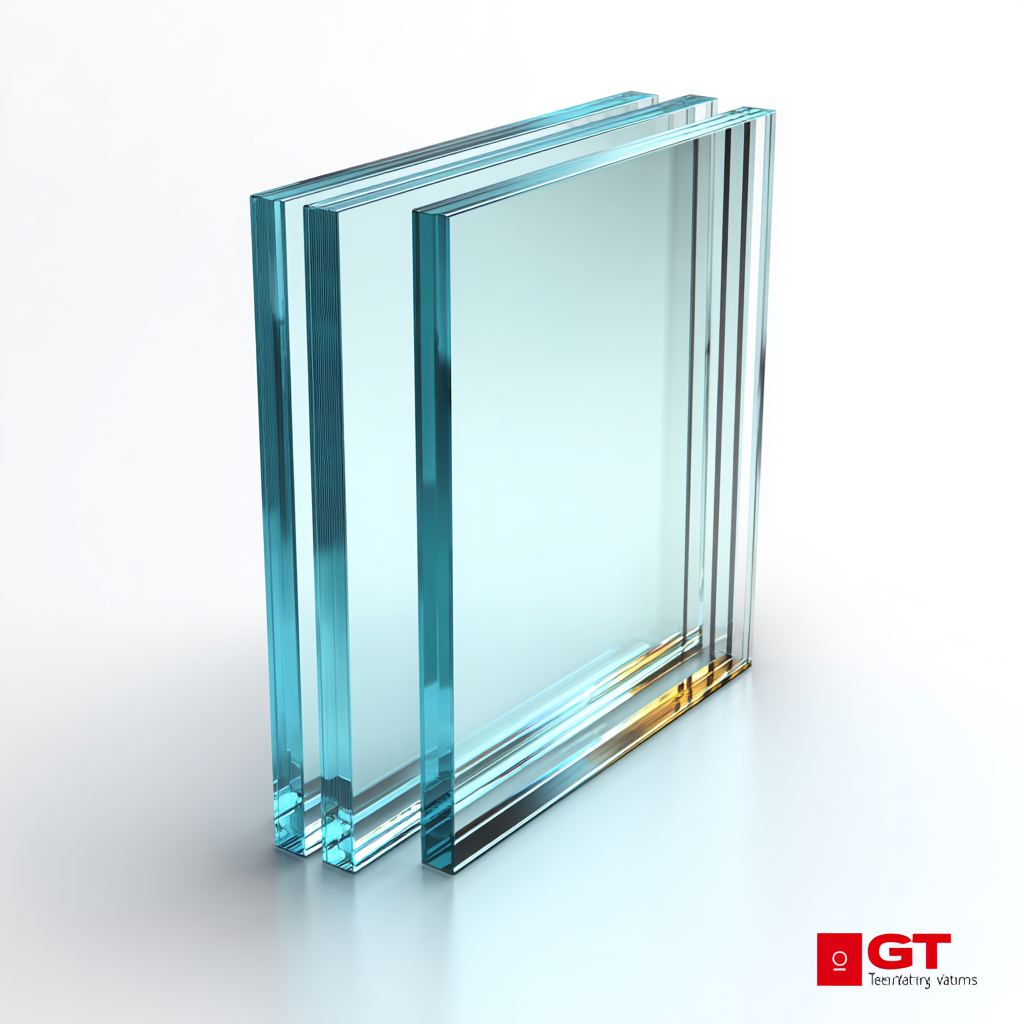
2025 Industry Trends Shaping the Future of Best Tempered Glass Panels
As we look ahead to 2025, the tempered glass panels industry is poised for significant transformation, driven by evolving consumer demands and technological advancements. According to a report by Grand View Research, the global tempered glass market is projected to reach USD 70 billion by 2025, growing at a compound annual growth rate (CAGR) of 8.5%. This growth is largely fueled by the increasing adoption of tempered glass in architectural and automotive applications, where safety and durability are paramount. Additionally, innovations in manufacturing processes are enhancing the strength and aesthetic appeal of tempered glass panels, making them a preferred choice for designers and builders.

In this blog, we will explore the key trends shaping the future of tempered glass panels, focusing on their technical specifications, market dynamics, and the various top types that are setting industry standards.
Emerging Technologies Revolutionizing Tempered Glass Panel Production
As we look toward 2025, the tempered glass panel industry is on the brink of transformation, driven by emerging technologies. Innovations such as advanced automation, artificial intelligence, and cutting-edge materials are streamlining manufacturing processes. These advancements not only enhance the quality and durability of tempered glass but also significantly reduce production times and costs. By integrating AI-driven data analysis, manufacturers can now predict defects and optimize their production lines with precision, ensuring a higher yield of flawless panels.
Tip: To maximize efficiency in your production facility, consider investing in machine learning tools that analyze production data in real-time. This proactive approach can help identify bottlenecks and improve overall workflow.
Another game-changer is the adoption of sustainable materials and eco-friendly methods in tempered glass production. Manufacturers are increasingly focusing on reducing their carbon footprint by utilizing recycled materials and optimizing energy usage. These green practices not only appeal to environmentally conscious consumers but also comply with stringent regulations, paving the way for a more sustainable industry.
Tip: Explore partnerships with suppliers of recycled glass and eco-friendly materials to enhance your product offerings. This commitment to sustainability can set your brand apart and attract a growing customer base that values environmental responsibility.

Sustainable Practices in the Manufacturing of Tempered Glass Panels
 Sustainable practices in the manufacturing of tempered glass panels are increasingly vital as industries strive to reduce their carbon footprint. With the rising demand for eco-friendly materials, manufacturers are adopting techniques that prioritize energy efficiency and waste reduction. This shift not only benefits the environment but also appeals to consumers who are increasingly aware of their purchasing choices.
Sustainable practices in the manufacturing of tempered glass panels are increasingly vital as industries strive to reduce their carbon footprint. With the rising demand for eco-friendly materials, manufacturers are adopting techniques that prioritize energy efficiency and waste reduction. This shift not only benefits the environment but also appeals to consumers who are increasingly aware of their purchasing choices.
Tips for implementing sustainable practices include investing in energy-efficient production equipment and materials. Choosing to source raw materials locally can reduce transportation emissions, making the manufacturing process greener. Additionally, companies should consider recycling glass scraps generated during production to minimize waste. This not only lowers costs but also contributes to a circular economy, where materials are reused rather than discarded.
Another key aspect of sustainability is using non-toxic adhesives and coatings in the manufacturing process. This reduces harmful emissions and contributes to a healthier work environment. Manufacturers should also engage employees in sustainability training programs, fostering a culture of environmental responsibility throughout the organization. By embracing these practices, companies can lead the charge toward eco-friendly tempered glass production while addressing the growing consumer demand for sustainable products.
Innovative Designs and Aesthetic Trends for Tempered Glass Applications
As we look toward 2025, the landscape of tempered glass panels is experiencing significant transformation driven by innovative designs and aesthetic trends. The focus is shifting to not only functionality but also visual appeal, with manufacturers increasingly experimenting with colors, textures, and finishes that elevate tempered glass from a mere industrial material to a centerpiece of modern design. From sleek minimalist styles to bold, vibrant patterns, designers are finding new ways to integrate tempered glass into everyday environments.
Tips for Selecting Tempered Glass Panels: When choosing tempered glass for your next project, consider the context of its use. For a contemporary living space, opt for frosted or tinted options that can provide a sense of privacy without sacrificing light. If you're looking to make a statement, textured glass can add depth to shower enclosures or dividers. Additionally, keep in mind the practicality of maintenance; smoother finishes tend to be easier to clean, ensuring your design stays looking fresh and new.
As aesthetic trends evolve, so does the sustainability aspect of tempered glass. More manufacturers are embracing eco-friendly production techniques and materials. This shift not only caters to an environmentally-conscious clientele but also aligns with the growing trend of biophilic design, allowing for more natural light and connection to the outdoors. When designing with tempered glass, think about how it can enhance airflow and visibility while maintaining energy efficiency.
Consumer Preferences and Market Demands Influencing Glass Panel Features
The trend of consumer preferences is significantly influencing the features of glass panels in various appliances, particularly refrigerators. As consumers become more discerning, they are increasingly drawn to the aesthetic and practical benefits of glass. This shift is evident in the rising demand for glass panel refrigerators, which not only enhance the visual appeal of kitchen spaces but also showcase innovative designs that cater to a modern lifestyle. Social media has played a pivotal role in driving this trend, with unique designs and cultural elements becoming viral sensations, leading consumers to seek out glass panel options that reflect their personal tastes.
Moreover, the glass panel market is expected to see substantial growth as it aligns with emerging consumer demands. The market for curved glass, for example, is projected to expand significantly by 2033, driven by its versatility in both residential and commercial applications. Consumers are now looking for customized features, such as specialized shapes and finishes, which can complement their décor. As these trends evolve, manufacturers are responding with advanced technology and innovative designs that prioritize both functionality and aesthetic appeal, ensuring that the future of tempered glass panels remains bright and compelling.
2025 Industry Trends Shaping the Future of Best Tempered Glass Panels
| Feature | Consumer Preference (%) | Market Demand (%) | Trend Influence (%) |
|---|---|---|---|
| Eco-friendly Materials | 78% | 66% | 82% |
| Increased Durability | 85% | 75% | 88% |
| Customization Options | 72% | 58% | 70% |
| Smart Glass Technology | 55% | 65% | 60% |
| Safety Features | 80% | 77% | 79% |
Future Challenges and Solutions for the Tempered Glass Industry
The tempered glass industry is facing an array of future challenges and opportunities as we approach 2025. Among the most pressing issues is the sustainability of raw materials, with a report by Transparency Market Research indicating that the demand for recycled glass is projected to increase by 15% annually. This shift highlights the pressing need for manufacturers not only to optimize production techniques but also to develop eco-friendly alternatives that can meet both economic and environmental needs.
In addition to sustainability, the industry must confront the growing competition from alternative materials. According to a study by Research and Markets, the global market for tempered glass is anticipated to grow at a CAGR of 6% through 2025, yet the rise of advanced composites and plastics poses a significant threat to market share. To combat this, tempered glass producers must innovate by developing higher strength and lighter-weight products that can outperform these alternatives. Investing in advanced manufacturing technologies, such as smart glass solutions and automated production lines, will be crucial for companies aiming to maintain their competitive edge in the evolving landscape of the tempered glass market.
2025 Industry Trends Shaping the Future of Best Tempered Glass Panels
This chart illustrates the projected impact levels of various trends shaping the tempered glass industry by 2025. The trends include sustainability initiatives, advancements in smart glass technology, an increase in market demand, regulatory challenges, and fluctuations in the cost of raw materials. Each trend has been assigned an impact level on a scale from 1 to 10, indicating its significance for the industry's future.
